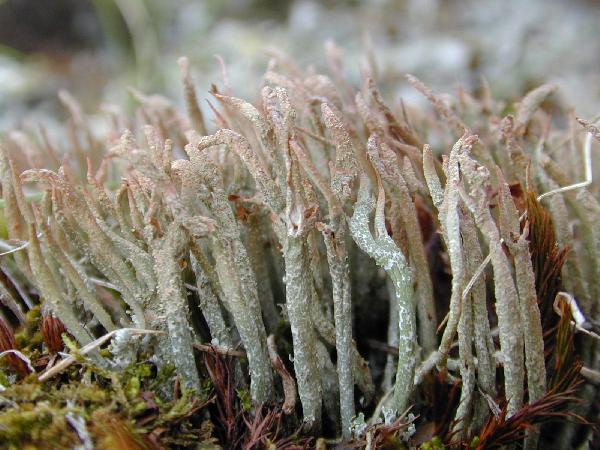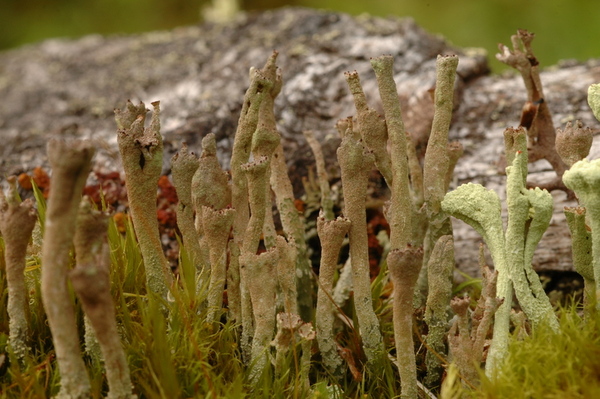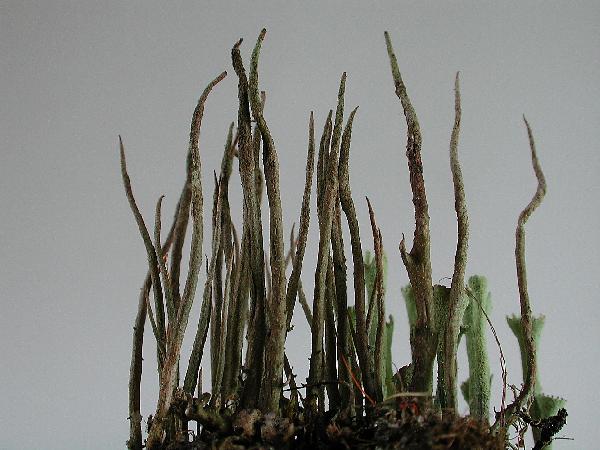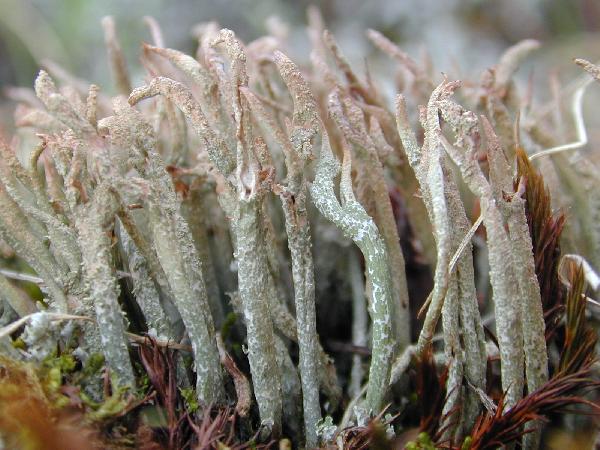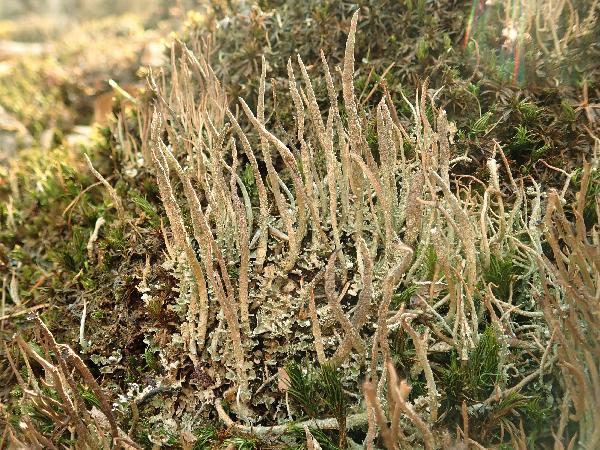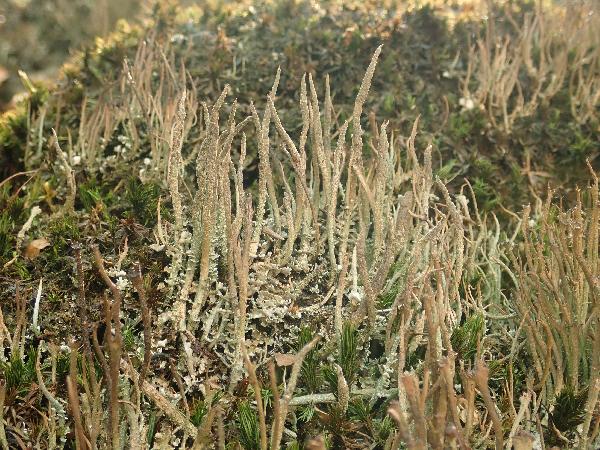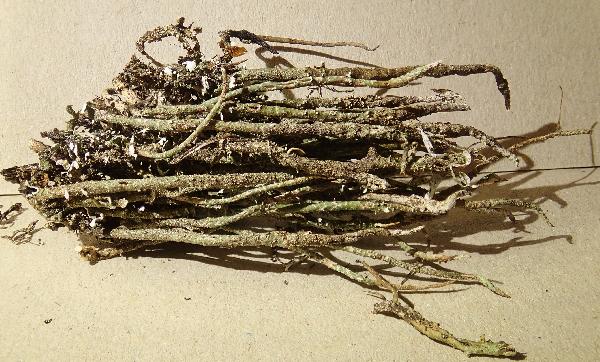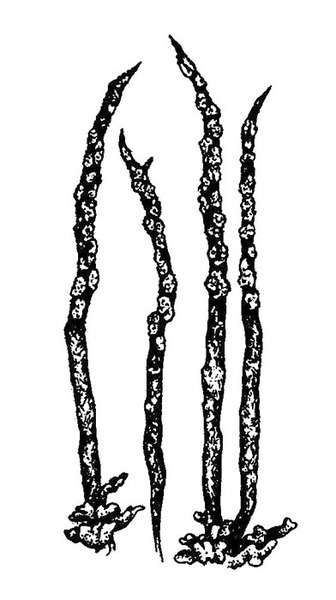Cladonia cornuta (L.) Hoffm.
Descr. Adumbr. Pl. Crypt. Lich.: tab. 25, 1791. Basionym: Lichen cornutus L. - Sp. Pl., 2: 1152, 1753.
Synonyms:
Distribution: N - Frl (Burgaz & al. 2020), Ven, TAA (Nascimbene & al. 2022), Lomb (Rivellini 1994, Rivellini & Valcuvia 1996), Piem (Isocrono & al. 2004), VA (Piervittori & Isocrono 1997, 1999), Emil, Lig (Brunialti & al. 1999, Burgaz & al. 2020).
Description: Primary thallus squamulose, the squamules usually ephemeral, 3-4(-8) mm long, 1-4 mm broad, crenate to irregularly lobed, ascending, glaucescent to olive-green above, whitish below. Podetia bacilliform, hollow inside, 4-10(-17) cm tall, up to 2(-3) mm thick, mostly unbranched and with pointed apices, rarely with a few branches or with small terminal cups, greenish brown to dark brown, melanotic at base, corticate for at least half of their length (the cortex smooth, finely areolate), patchily farinose-sorediate in upper part, esquamulose. Apothecia rare, brown, convex, terminal. Asci 8-spored, clavate, thickened at apex, with a K/I+ blue tholus and a K/I+ strongly blue outer gelatinous sheath, Cladonia-type. Ascospores 1-celled, hyaline, ellipsoid. Pycnidia rare, dark, semi-immersed, usually along the margins of cups, with a colourless jelly. Conidia hyaline, curved. Photobiont chlorococcoid. Spot tests: K- or K+ yellowish slowly turning brown, C-, KC-, P+ red, UV-. Chemistry: fumarprotocetraric acid complex.Note: a boreal-montane to subarctic-subalpine, circumpolar species found on mineral and organic soil, but also on wood, with optimum near treeline in areas with siliceous substrata; probably restricted to the Alps in Italy.
Growth form: Fruticose
Substrata: soil, terricolous mosses, and plant debris
Photobiont: green algae other than Trentepohlia
Reproductive strategy: mainly asexual, by soredia, or soredia-like structures (e.g. blastidia)
Commonnes-rarity: (info)
Alpine belt: extremely rare
Subalpine belt: rather rare
Oromediterranean belt: absent
Montane belt: extremely rare
Submediterranean belt: absent
Padanian area: absent
Humid submediterranean belt: absent
Humid mediterranean belt: absent
Dry mediterranean belt: absent

Predictive model
Herbarium samples


P.L. Nimis; Owner: Department of Life Sciences, University of Trieste
Herbarium: TSB (12973)
2002/02/18
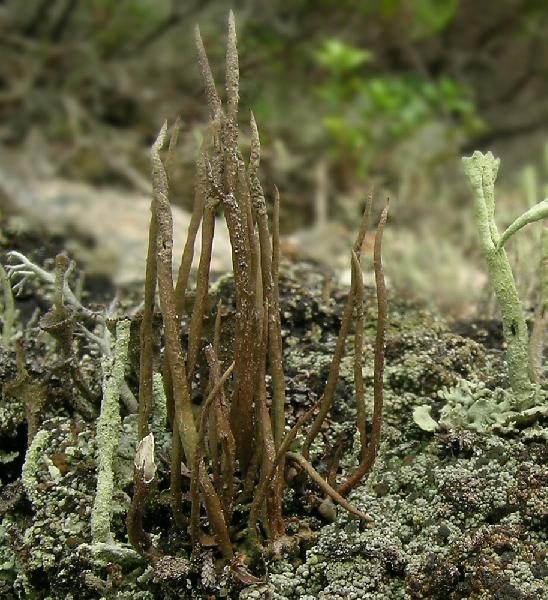
Ulrich Kirschbaum CC BY-SA 4.0 - Source: https://www.thm.de/lse/ulrich-kirschbaum/flechtenbilder
Sweden: Värmland, Dalarna.
Growth form: Fruticose
Substrata: soil, terricolous mosses, and plant debris
Photobiont: green algae other than Trentepohlia
Reproductive strategy: mainly asexual, by soredia, or soredia-like structures (e.g. blastidia)
Commonnes-rarity: (info)
Alpine belt: extremely rare
Subalpine belt: rather rare
Oromediterranean belt: absent
Montane belt: extremely rare
Submediterranean belt: absent
Padanian area: absent
Humid submediterranean belt: absent
Humid mediterranean belt: absent
Dry mediterranean belt: absent

Predictive model
| Herbarium samples |


P.L. Nimis; Owner: Department of Life Sciences, University of Trieste
Herbarium: TSB (12973)
2002/02/18

 INDEX FUNGORUM
INDEX FUNGORUM
 GBIF
GBIF
 DOLICHENS
DOLICHENS
